5:11 p.m. PDT Sept. 3, 2021
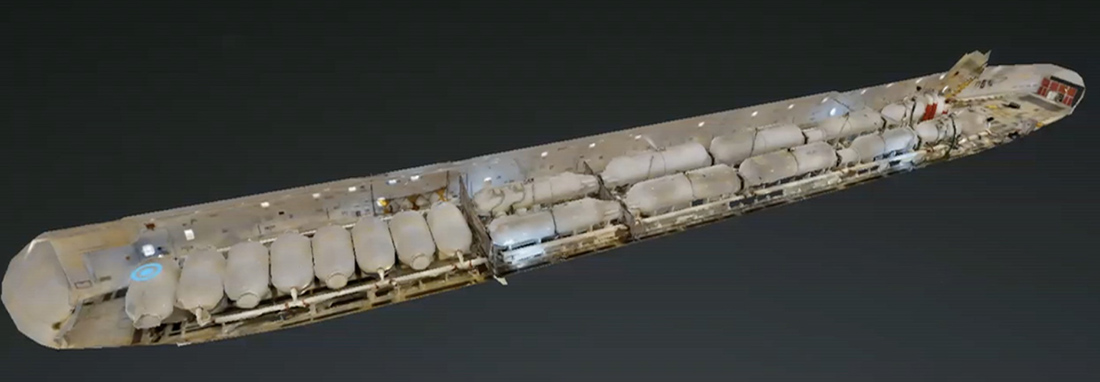
A company that provides aircraft for lease has purchased the retardant delivery system (RDS) formerly in the 747 Supertanker. Logistic Air is now the owner of the tanking system that for years had interim approval by the federal government’s Interagency Airtanker Board (IAB) to be used in an air tanker.
Global Supertanker’s recently modified website proudly proclaims “Returning to Service in 2022.”
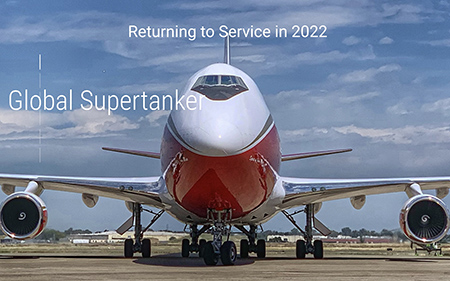
Many of the photos of aircraft on Logistic Air’s website are 747s, but they provide wide-body and narrow-body passenger and cargo aircraft for world-wide operations.

The SuperTanker’s RDS is comprised of approximately 20 tanks that hold retardant and enough compressed air to pump the retardant out of the four nozzles that were in the belly of the huge aircraft. At various times the air tanker had interim certification by the IAB to carry 20,000, 19,200 and 17,500 gallons of retardant. The IAB and the US Forest Service appeared to bend over backwards to find reasons to not issue full approval to the aircraft and the RDS.
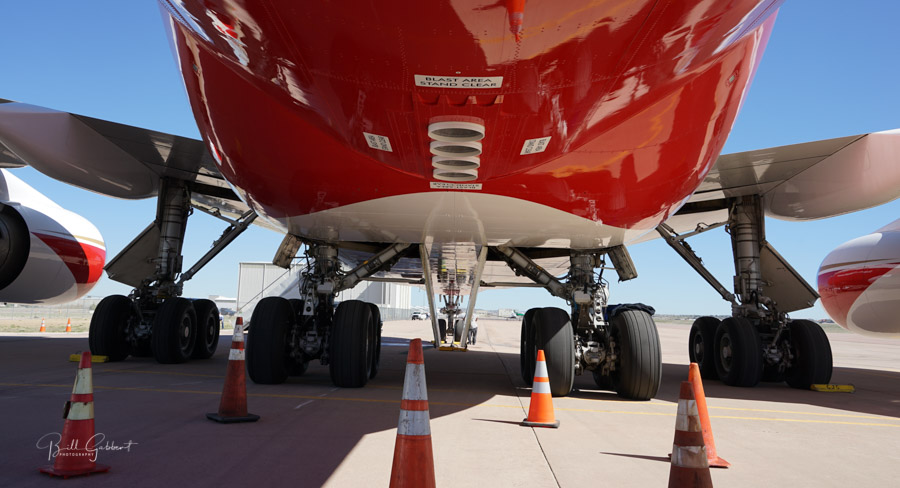
Earlier this year the SuperTanker’s drop controlling system and other components were significantly modified to improve the delivery of retardant, including metering the volume dispersed based on the ground speed of the aircraft. It then went through dozens of tests on the ground. The operators were waiting for it to be scheduled for the IAB’s grid or cup test which measures the amount of retardant that hits the ground over a large grid. But before that took place, the owner, Alterna Capital, shut down the company and sold the aircraft and the RDS to two companies. The 747 was purchased by National Airlines to be used as a freighter, and Logistic Air bought the RDS.
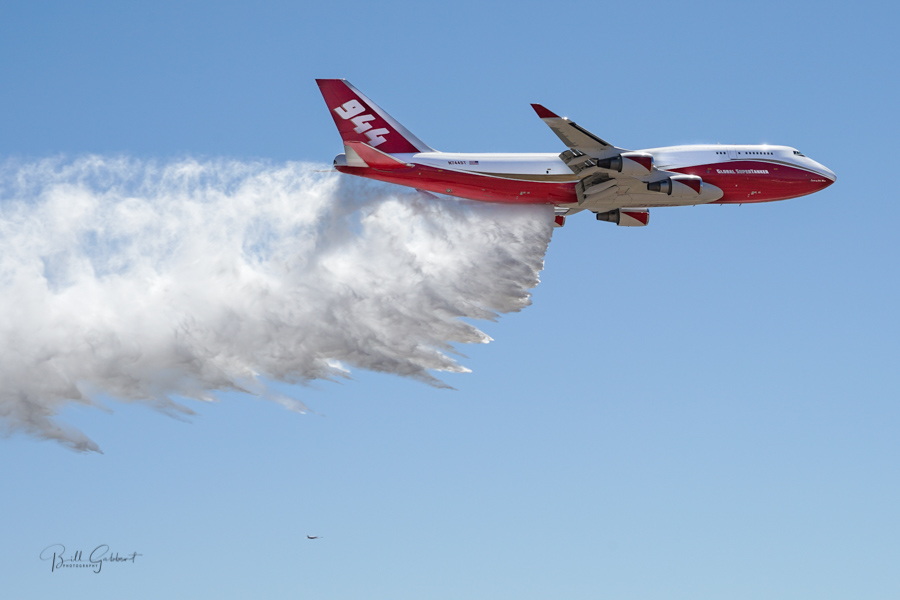
A person at Alterna Capital who was not authorized to speak for the company told Fire Aviation that Global Supertanker had approximately two dozen employees and contractors when the doors closed and none of them are working for the new owners at this time. The person said Alterna “will support Logistic Air in any way we can.”
Calls to Logistic Air were not immediately returned.
UPDATE at 6:27 p.m. PDT Sept. 3, 2021
After this was published we received a call from a person at Logistic Air who asked to remain anonymous. They confirmed that the company plans to install the RDS in a nose-loading 747-200 when the aircraft completes maintenance after the first of the year. The aircraft itself will have to be modified, of course, to enable loading retardant and compressed air, and the plumbing and belly nozzles need to be installed. Then they will schedule a grid test, which they are confident it will pass. The final and most important step is applying for and receiving a new contract from the US Forest Service, no easy feat. We were told that some of the former employees of GlobalSupertanker are expected to work with the new organization.
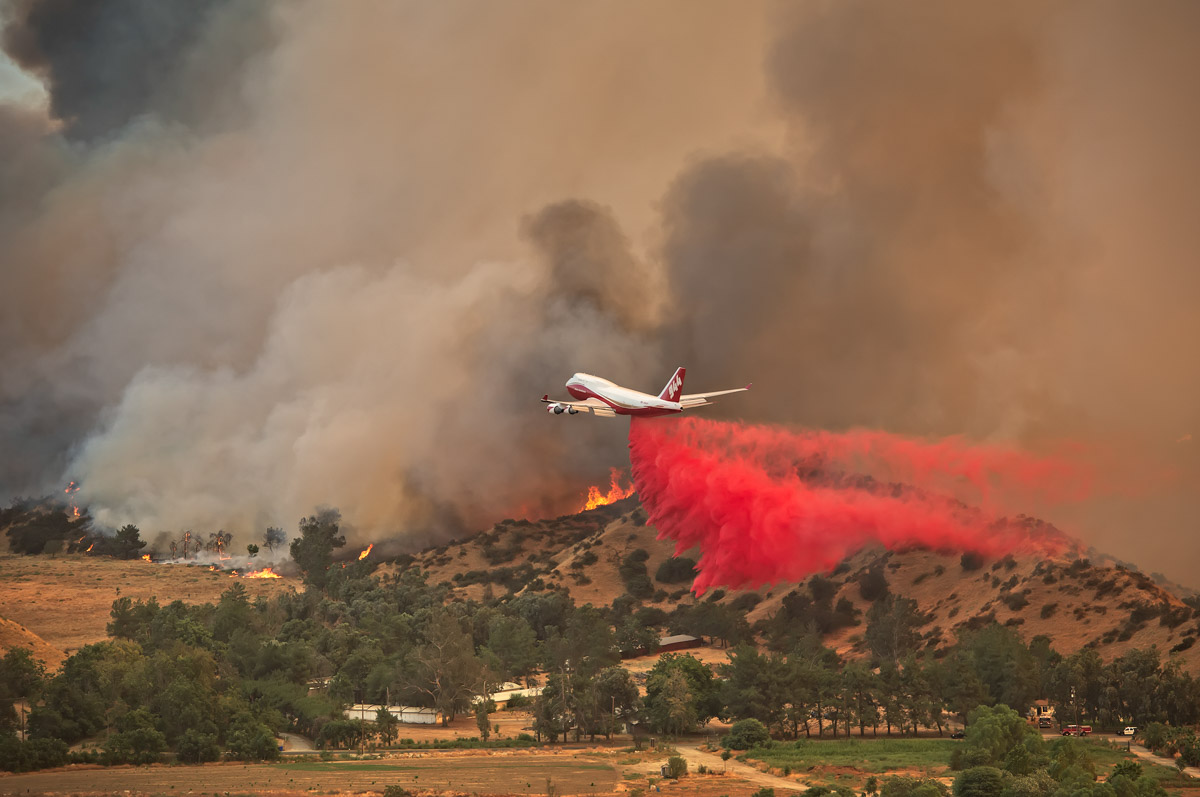
Thanks and a tip of the hat go out to Rick.

I don’t undertstand why Aircranes are not being talked about. They are so much more effective than any LAT or VLAT and can actually be used for supression, rather than just delay. Best of all, because they can drop WATER, compared to a VLAT they are much, much, less expensive to operate and can deliver as much or more fluid than any of them if a source is nearby. I did IA on Cranes for many years, and there is nothing on the planet that is as accurate of effective.
SO contract Erickson with the multi-millions to develop a new engine/transmission combination, up the payload MTOW to a 3000 gallon payload and have an paralleled firefighting platform that could be sighted anywhere. 40 Cranes on contract in areas of significant exposure would help the IA response tremendously.
Yay, no more mega fires!😉
Tom McClintock, Sep 2: “Has President Biden responded to our invitation to view the wildfire devastation in California?”
“No.”
“One of the biggest problems we have is educating our Eastern colleagues about the importance of aggressive, scientific, and active forest management.”
I can’t believe some of the comments on this page.
I’m hesitant in posting my own because I’m afraid it will just lead to an endless back and forth from those who see the 747 or DC10 as the end all solution and fire savior.
The 747 is an outstanding aircraft; it is very maneuverable and capable aircraft with lots of power and I believe with the right tanking system, could be a very effective airtanker (just as or more effective than the DC10). But bringing the 747 back as it is, with the pressurized tanking system is a waste of time and money. Just like the MAFFS systems; the C-130 is an outstanding and very capable aircraft, it’s the pressurized delivery system that is worthless.
How the MAFFS systems passed the drop tests and the 747 didn’t, I don’t know, they are both pretty much useless except when dropping on light fuels in low wind conditions.
The pressurized system breaks the retardant down into such fine particulates that once pushed out of the aircraft it is easily blown off line with low to moderate wind volume (not hitting the desired line), and it won’t cover the fuels with a heavy enough level of retardant that prevents burn though, nor does it have the weight to punch through upper canopy layers to hit the ground to prevent shadowing on the ground fuels.
Why Evergreen ever developed the 747 with the pressurized system is beyond me. I know it had something to do with maintaining aircraft pressurization and still allowing the large payload the 747 has, but having all of the pressurized tanks and all the other equipment needed to accomplish that creates so much more problems than it is worth.
I am not that familiar with the distance between the 747 and DC 10’s belly and concrete, I would think they are similar, the 747 should have hung an external tank like the DC10 did and they would’ve been approved years ago.
The other thing that concerns me in reading some of these comments is the “hero worship” of air tankers. Air tankers are very effective at SLOWING the rate of spread in most fuels, but NONE of them “Save” the day or put the fire out (unless it is a grass fire of moderate or low intensity). To think your house was “saved” by a retardant drop alone is misguided. I have no doubt the retardant drop cooled the fire enough to allow some dozers or hand crews or engines to get in there and they stopped the fire spread is actually what happened.
It seems many people believe in the “PR” aspect of airtankers, meaning if they don’t see airtankers dropping retardant on a fire , then whatever agency is in charge is then incompetent and not doing anything to put the fire out… Nothing could be further from the truth.
Please don’t get me wrong, I am not “Anti” airtankers. I very pro airtankers, I did ATGS for 20 years and I know how effective airtankers can be, especially at initial attack. But I also know how much retardant, flight time, risk exposure and MONEY we absolutely waste because the public wants to see red stuff falling out of the sky or they think nothing is being done if we don’t.
Once a fire has gone beyond initial attack it usually (not always) is a waste of retardant to keep working airtankers on a fire. Very rarely do days and days of constant retardant drops, dropping hundreds of thousands of gallons of retardant provide an effective use against the progress of the fire, unless you have moderate to low intensity or rate of spread.
Do I think it would it would be a good idea if wildland agencies had more very large and large airtankers available for their use? Yes I do. But let’s be realistic, where do you want the limited amount of money to go?
People make comments on here like there is an endless well of money that would allow agencies to have 10 or more 747’s available and runways can be upgraded and extended all my next season with no problems, if we only had the right leadership! Really?
I would hope we would put most of whatever little bit of money agencies are able to get into increasing the number of and training of ground crews of all kinds (hotshot, engine, helitack and the administrative positions needed to support those folks) and even some of that money going for some more longer term exclusive use contracts for Large Air Tankers.
But the most important thing that needs to be funded, not just by the federal government, but also by state and local governments, is fuel reduction treatments of all types and community planning and development of fire safe communities with planned escape routes and safety zones as part of their plans.
Having 100 hotshot crews and 50 747’s or DC10’s would have done nothing to stop most of the devastating large fires that have occurred in the last ten or twenty years, the fire conditions were just too extreme. I believe folks just need to understand that this is the future of living in a wildland environment and the best thing people can do is start treating within their community and all around them as best they can.
I didn’t mean to get on this extended rant, but some folks seem to think all we need is some more 747’s of DC 10’s and all will be well with the world, but it vastly more complicated than that and wishing for the moon isn’t going to help.
WOW . . . ! Of course, if you’ve never flown mil or civ early warning, worked aircraft design . . . or experienced up close and personal wildfire, been on fire-safe cncls, friends on first-deploy crews, carried backpacks & tools in the flame . . . your analysis is . . . not unexpected. Still have Navy flt gear, fire gear, and Boeing/Lockheed/Hughes/USNR resume. Bin thar –admin, early detect, all resources–& common sense for needs to the drill.
One US President said . . . ” . . . . if the forests were cleaned, the annual wildfires in California wouldn’t happen.” Concur . . . plus early detect/deploy . . . while watching from my mountain valley home (2006 Day Fire) and urged all CalFire/USFS tech and resources to follow, while supporting Evergreen’s WIP 747 STC.
Richard…
How about telling us how one goes about “cleaning up the forest floor” across millions of acres of rough, inaccessible mountain terrain.
While you are at it, could you recommend a quality hiking/ hunting boot to use while out cleaning that forest floor ? What do you use ?
“Inaccessible . . . ?” Rare lightning strikes can cause fires in those areas, but, thank God, are often accompanied by rain. But then . . . you knew . . .
Wildfire Protections for Homes (Amy Murre–volunteer for the Stop Clearcutting CA Campaign / Sierra Club 2021) –“Prevent fires from the house out, rather than the wildland in.” These words from The California Chaparral Institute capture the shift that is needed in the state’s approach to wildfire management and prevention. California’s wildfires are a dire concern. Also concerning, however, is the ongoing effort to address these wildfires by removing vegetation rather than making buildings less vulnerable to fire.
Current wildfire prevention in California focuses almost entirely on vegetation: thinning forests, removing dead trees, clearing forest lands, removing chaparral, and denuding vegetation to create firebreaks. Since most fires are human-caused, roadways and powerline easements are cleared to a controlled easement width.
But then . . . you also knew . . .
(in my Los Padres canyon, the counties enforce weed abatement)
My old leather Navy Flight Boots work just fine (keeps the foxtails and burrs off). But then . . . you might have known . . .
Ground to belly measurement for the 747 (most models) is 6 feet to almost 7 feet.
747SP measurement is 7.4 feet to a koosh more than 8 feet.
Ground to belly measurement for the DC-10 (all models) is 7.38 feet to 8.3 feet.
Spot on…..
Nice post old air attack……I guess some of these pro athletes feel the same way…they hear how their sport should be played by folks who couldn’t make junior varsity in 9th grade……
You covered it A to Z…..thanks
Hey wait a minute!
In 9th grade, I not only made the JV team but I also made Varsity too!
Suited up for the JV game in the afternoon, played and then suited up for the Varsity game later the same night.
Am I in? (G)
Well…did you just suit up for varsity, or did you bring the bacon home..
Have my fair share of slivers, along with plenty of game time…which my old body now says wasn’t so smart…..
And a piece of trivia……1st drop the 747 made was in AK in 09 on the railbelt. They provided at no cost. I was doing air attack on the railbelt, but the drop wasn’t made on my rotation.
Jack, the atgs that handled the drop wasn’t too impressed. His comments pretty much mirrored old atgs’s comments earlier.
Suited up only for varsity for three more years (four year high school). No bacon. Left over hot dogs from the snack bar. This was back when hot dogs were only made of beef. Ok, maybe some pork too.
Those PTA ladies even wrapped the dogs up in foil. Stuck em in the freezer when I got home.
Free food tastes much better than food you had to pay for yourself. (G)
WOW someone figures out that the 747 is just another tool, in the box to use. Yes all LATS and VLATS are great , fast and can deliver lots of MUD, But without ground pounders lots of $$ is just being thrown away ……
Well said @ Old ATGS
You hit the nail on the head! It also does not help that the public are uneducated as well as some of the political leadership on how fire suppression works, you are correct in your statement if they don’t see the red stuff falling then nobody is doing anything to fight the fires. I like you could go on a rant about this stuff and what I hear and see, but most of us know we are just preaching to the choir. I just wish that the leadership in DC would actually get someone in there knows something about aerial fire fighting and the interaction between ALL involved with fighting fire from the air and on the ground, and give a real budget number of what it takes instead of “oh we will be fine with what we got” We all know that’s not the case.
That’s brilliant, phallic symbol of airtankers but the limp symbol. It can’t drop effectively, very limited number of bases it can work out of, it will only ever be called when the agency (state or federal) wants to “show” something is being done when it is impotent. No one but the internet commenters want it. The same mental giants that talk about carpet bombing fires as is they are blowing up a aircraft factory in Germany. The poor company that’s getting suckered into “make a few million in the air tanker business” by investing tens of millions. There’s one born every minute.
I’m glad I am not the only one that feels that the GST is not the end-all-be-all. I got banned from the Fire Bombers Facebook page because I called it a the phallic symbol of airtankers.
Where can I purchase the tee shirts? I see there are two different sayings. “747 is a waste of money.
Or, “Give me 30 Seats” “Retardant line in one sortie is not an option” (BLM would like that) shirt.
We need a large air tanker fleet. Big and small aircraft. We need a large ground crew along with the Tankers.
I see all the money our Government waste and all the money we send to countries that hate us!
I agree we need a large diverse tanker fleet! I love the Canadair 415 now the Improved 515. Is there a large either military or commercial aircraft that is best for the volume that is needed, all airspace clearances and nozzle design issues aside/ or included that would be worth the investment? I am a very enthusiastic fan of the Queen of the Skies but the video of her dropping retardant after some brilliant flying of that large aircraft was sad to see because there are most likely many great firefighting pilots out there who could have put a lot more water and retardant on a fire more accurately than the queen did in that video
I read all the naysayers . . . and agree with Paul. Then, remembering while flying ‘Early Eleven’ aboard CVS and CVA (‘at the ready’ drills & real-time) . . . I recall how we continued to fly cover for global ‘hot spots’. Do we ‘fly cover’ at home during ‘fire season’ . . . ? The vagaries of DC admins show up also in our ‘forests’ and THEIR ‘admins’ (fires are ‘hometown wars’). Living in a national forest during that ’77-’80 drought & riding our (volunteer) Engine 16, we later saw the 2006 Day Fire & Evergreen’s 747 Tanker STC come together. But the (closed-no entry) Sespe Wilderness fire came up to my valley because of . . . incompetent admin.
SSBN’s and Supercarriers are a deterrent . . . always on station. . . . saturation.
‘Nuff said.
That morning the Campfire started NO FORCE ON EARTH could have stopped it . in only 1/2 an hour is was way beyond control. I live up above Pulga and it was the scarest thing I ever saw
I did not write the message below. My point is that we should do more to prevent having to create these ‘tools’.
Credit to Randal Cowley:
I am sharing this because after the Camp Fire (which burned up Paradise) I thought there might finally be some changes to the way we manage our National Forests but that hasn’t happened. I was watching the news last night and the powers to be are putting all the blame on climate change without mentioning other factors that hinder the ability of firefighters to fight fires safely and aggressively. During my career with the F.S. (1974-2004), initial attack was the focus. Keep em small! Detection and access were key to achieving this. What’s changed? Lookouts were closed down and a reliance on aircraft was adopted. I believe lookouts spot smokes much quicker. Access has become much more difficult because the F.S. has been decommissioning roads, lots of roads. This hampers the ability of fire engines, dozers, water tenders, and crews to get to the fire quickly while it’s small.
When I was listening to the briefings, there was a continuing theme that hampered their ability to fight fire aggressively. There were too many snags to send crews in, fuels were too dense, and no access. While we can’t control weather, humidity, and terrain, we can control the snag density, fuel loadings, and the closing of roads. With the ideology of groups like the Sierra Club that no commercial products should be removed from the National Forests, management of our forests became cumbersome and expensive. With the intervention of the judicial system, it became impossible. If dead and dying timber is not removed, then you have too many snags to put crews where needed. Snags and down logs are receptors for embers that create spotting problems that we heard so much about and they add to the fuel loading. Without going into a lot of detail, they make line construction harder, mop up very difficult, and burn longer sterilizing the soil. While I didn’t agree with the one size fits all of the Quincy Library Group, they were right about the need to manage our forests to prevent what we find ourselves in now. With our forests so dense, crown fires are the norm making it impossible for direct line. With the closing of so many roads it takes longer to get to the fires and doesn’t allow access for fire engines, water trucks, and other mechanized equipment.
PGE may have started a fire and climate change may have lengthened the fire season but it is my belief that the environmental laws and groups, the mismanagement of our forests, the media which spews the talking points of liberals, and the non action of our elected officials that are responsible the Dixie Fire, Camp Fire, etc.
I say all this so we will not be silent any longer. I don’t know about you but I am tired of seeing towns burn, friends lose their homes, wake up every morning to smoke, and watch what myself and others worked so hard to protect burn up. Please let your voice be heard.
Our fire fighting agencies need to be more aggressive and put these fires out when they are small and manageable. I don’t know who was responsible for the Tamarack Fire but instead of putting the fire out when first detected, they were monitoring it.
If we don’t speak up, then next year is on us. Our elected officials have been getting campaign dollars and votes from people not effected by these fires for long enough. I hope I have helped some see what I believe to be the reason for these mega fires. From 1977 to 1980 we saw the worst drought California had seen and there were no fires like what we see today. Why? We managed our forests. We salvaged the bug killed timber. And we fought fire aggressively using a great road system that each of us paid for. Thanks for listening.
Paul-
I agree with everything Randal Cowley wrote. I lived in the same period of history as Randal. I fought fire on a hand crew during the ’72 and ’73 fire seasons and the largest fire I worked on was the 17,000 acre Cherry Lake burn, which even the career CDF men I worked with thought has a huge fire in that day. It was a different time.
Now I’d like to tell you about what I experienced living and working in the woods between 1972 and 2000. I wrote this to a friend after reading a Sacramento Bee article that questioned how our National Forests are being managed, and when wondering what can be done the author never mentioned the term ‘logging’. Here’s what I wrote to my friend:
Again, this article never discusses the Forest Service’s lack of a timber sale program, which used to fully fund the agency and all of it’s fire fighting efforts. Selling timber also returned money to the counties in which the timber sales were logged. The counties then funded a large percentage of their schools and road departments with this money. They were called ‘Payments in Lieu of Taxes”, since FedGuv pays no property taxes to the counties they hold land in. And all the counties in the Sierra received a lot of money from the sale of timber.
(The Tamarack Fire earlier this year burned in Alpine County, which is 94% owned by the federal government.)
Now, with no timber sales, 2/3 of the Forest Service’s budget goes to fighting fires in NorCal and the counties have to go begging to Congress for the money to pay for their schools and roads. The appropriation bills to do this are always given a flowery title like “The Rural Roads and Schools Funding Act of 20XX”. It’s all borrowed money and it’s a completely screwed up system.
All this while the forests burn for lack of stewardship.
Here’s an example how federal timber sales benefitted counties. When I worked at a gold mine in Sierra County in ’76 and ’77 the kids that caught the bus in Alleghany to attend high school in Downieville had to catch the bus extra early on Thursdays in the winter. That’s because every Thursday any kid that attended Downieville High School could take another school bus from Downieville and head to Boreal Ski Area for a day of skiing. It was considered their P.E. class and all the costs were covered, including transportation, lift tickets, ski rentals and lunch. And this was all possible because the school district was flush with cash because of FedGuv selling timber and returning a percentage of the timber receipts to the counties.
Apologies for the long post but I’m beginning to feel this is lost history. And with todays logging technologies we can do wonderful things, creating products needed for mankind while cleaning up the woods and even generating electricity with the very material that is currently making the air hazardous in the western U.S.
Thanks for listening.
You hit the nail on the head and very well said, way to many people with no common sense are in control, like the spotted Owen crap that was a joke instigated all this, how many of them are now homeless from these mega fires 😡😡😪👎👎
Perhaps a C-17 would be more useful? Shorter
My response to Phil’s C 17 suggest. Next fire season, of the eight MAFF units available install two of the units in a C 17. With two MAFFs discharging retardant simultaneously the coverage on the ground should be significantly improved. Who in the Forest Service would want to make aviation history?
As if it’s the Forest Service’s decision as to which USAF platform they put their tanks on. I said this before in another thread, but I’ll repeat it here: turning a C-17 into a super-MAFFS is not as simple as loading the tanks and handing the crew a launch order. C-17 and C-130 troop doors are not the same. A new plug would have to be designed, manufactured, tested, and certified as airworthy. You might be able to re-use an s-duct connecting the tank to the new left-hand door plug, but for the right-hand tank there would have to be a new s-duct and probably a new pintle. Again, these would have to be designed, manufactured, tested, and certified as airworthy. Not to mention the snail’s pace of government contracting to begin with. Oh, and convincing the Air Force to pony up a high-demand crown jewel like the C-17 is no walk in the park either.
All that adds up to a grand total of: never in a million years.
Contract a dozen more commercial tankers for 10% of the cost and be done with it.
C.T.D. Thanks for the C 17 response. What was I thinking???
Still a poor investment. It’s a “tool” in the right place just like the rest of the tanker world. The potential use is far less than the practical use.
As an ATGS, I would take 1 VLAT instead of 4 LATS or 8 SEATS to paint in your average fire. I would also take 2 VLATS instead of the Global Super tanker due to terrain.
The GST is not a cure all, fix all! It’s a tool that has limited use and effectiveness. We won’t discuss the airspace clearance needed for such and aircraft as well.
Can we just stop with the “Most hugestest is the bestestest” BS. Look, this thing is, and always has been, an unsupportable ramp queen. Queen of the Skies she may be but, in fire, she’s the Queen of the Ramp. Why doesn’t someone just do an A380 and get this over with? We need TWO tankers that nearly every tanker base in the country can’t support.
YES . . . !!!
And it will be just as useless as the first two times it was being shopped around.
I’ll never order it.